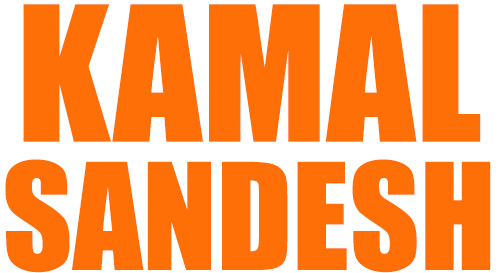VINAY SAHASRABUDDHE
& DHIRAJ NAYYAR
A small administrative innovation can have a transformative impact on governance. All it takes is a Gem of an idea. The Government e-Marketplace’ was launched in August 2016, in keeping with Prime Minister Narendra Modi’s stated goals of minimum government, maximum governance, corruption-free India, Make in India and empowering entrepreneurs. Its objective was to revolutionise government procurement of goods and services through a simple innovation.
The Government of India spendsRs. 4 lakh crore—almost double the value of India’s entire e-commerce market —annually on procurement of supplies, according to estimates by the Ministry of Commerce. If we include the state governments, the amount would multiply several times. Historically, the procurement process has been opaque and riddled with corruption, inefficiency and quality issues. As a signatory to the United Nations Convention on Corruption since 2011, India is committed to a system of public procurement based on transparency, competition and objective criteria in decision-making that are effective in preventing corruption’. As experts in public financial management the world over acknowledge, this is easier proposed than done. By creating a world-class e-platform for government purchases, the Commerce Ministry has attempted to do just that.
GeM addresses minimum government by eliminating the direct interface between buyers (government departments/officials) and sellers. It aids maximum governance by ensuring that the government procures only the best available goods and services. By eliminating the discretion of officials, the system of government procurement becomes corruption free. The government can apply the principle of preferential market access in a transparent way to promote the purchase of goods made in India, thus boosting manufacturing in the country. Most importantly, GeM levels the playing field; millions of small entrepreneurs can now sell their goods and services to the largest buyer in the country. Under the old system, the market was cornered by big players, leaving very little room for entrepreneurs.
GeM is resulting in substantial savings for the government, which can be deployed elsewhere for public benefit. Just recently, GeM saved the taxpayer Rs. 6.6 crore in a single transaction and has the potential to save at least 340,000 crore a year, which is roughly the size of the annual budget for MGNREGA. All it took for this change was motivation, imagination and digital tools.
The motivation was, in the words of Prime Minister Narendra Modi, to minimise prices while maximising ease, efficiency and transparency. “The government is committed to curbing corruption. One of the key aspects…is to minimise government’s human transactional interface. Accordingly, public procurement is being transformed by leveraging technology,” he stated.
As a near-monopoly buyer, one would think that the government would have leveraged its position to obtain quality goods at floor prices. However, the system of public procurement, through direct purchases, tendering and rate contracts, was famously riddled with inefficiencies and scope for graft. Time-consuming and cumbersome, it offered no real-time price discovery mechanism, because comparative data on prices across departments or for previous purchases was not readily available.
The rate contract system, implemented through the Directorate General of Supplies & Disposal (DGS&D, a centralised procurement body under the Ministry of Commerce), was used by central government ministries, departments, public sector undertakings and state governments. It suffered from a lack of competition and the everpresent threat of cartelisation of suppliers, since only a limited number were registered with the department. Price and product models were fixed for a whole year, quality issues abounded and negligence in delivery of small orders to remote places was a constant irritant.
An efficient, transparent and accountable system of procurement was needed to ensure timely purchase and delivery of products and services at reasonable prices. A group of secretaries to the Government of India came up with the idea of a market exclusively for government purchases. After all, as a buyer, the government was certainly big enough to command its own bazaar. Encouraging competition among manufacturers and wholesalers could ensure substantial savings to the exchequer in terms of bargain prices. However, streamlining and expediting purchases could not be at the cost of accountability and transparency.
Aggregators like Amazon and Flipkart had shown the way to an online platform. By gathering and presenting information on specific goods and services from competing players, the interests of the goods/ service providers as well as the customers (in this case, government departments) could be served.
A national public procurement portal was an innovation that checked all the necessary boxes—speed, easy price, discovery and transparency. The additional advantages were low transaction costs and elimination of administrative overheads. So, when a central government department wanted to go shopping, say for a biometric scanner or a bus or a set of bed sheets, it could head to an e-supermarket, compare prices and product specifications and place an order.
The Ministry of Information Technology stepped in and assigned the design of the platform to a group of young techies. The challenge was to build an e-commerce site which was user-friendly, but was in line with government financial rules (GFR) and lent itself to easy auditing. In some ways, it was easier than conventional e-commerce because inventory management and logistics were not the government’s headache; all it had to do was to bring the players together. The deadline was tight but they delivered, and GeM was online by August 2016.
Of course, the GFR had to be amended by the Ministry of Finance. A new rule, 141-A, was inserted to provide for an online government e-Marketplace (GeM) for common use goods and services’. It allowed purchases of up to 150,000 without obtaining clearance from above, which was a time-intensive procedure. The crux of the e-bazaar, designed by the IT ministry, was minimising human interaction by digitising the buyer-vendor interface and severely limiting discretion. GeM made fixing of contracts to favour certain vendors very difficult, besides throwing open the doors to any and all vendors, regardless of geography and granting access to the corridors of power.
The GeM is a one-stop shop which offers vendors direct access to the whole range of government departments. They can market their goods, bid for orders placed online, suggest new products and monitor payments. The consumers have the advantage of being able to compare products and prices, buy as and when required and return products which don’t match expectations. User-friendly dashboards display information on products and services available. Orders placed and contracts awarded are also open to public scrutiny.
As of 8 March 2017, it is mandatory for all ministries and central government departments to purchase supplies and services from GeM, if the desired items are available on the portal. The GFR has been suitably amended (Rule 149) to say, ‘The procurement of goods and services by ministries or departments will be mandatory for goods or services available on GeM.’ For items not available on GeM, the rate contracts system continues.
(Continued…)
(The above article is taken from recently published book
‘The Innovation Republic’.


